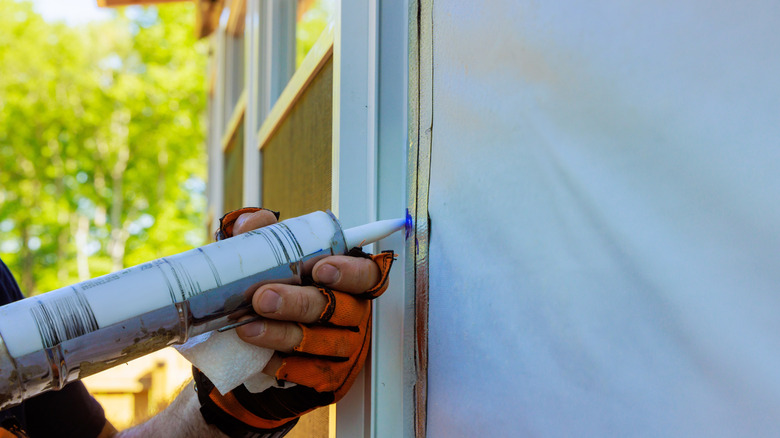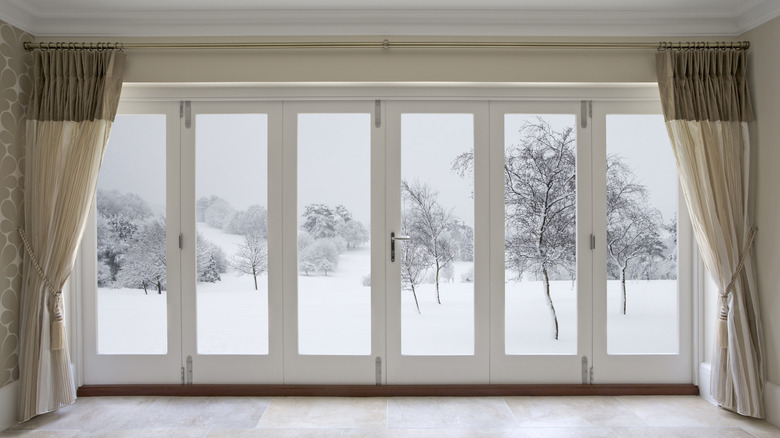High Heating Bills? Here's An Affordable Solution You Might Be Missing
We may receive a commission on purchases made from links.
Colder months tend to bring up a variety of financial considerations (including the almost $900 that Americans spend on winter holiday decorations every year). From the obvious need to bundle up — meaning a trip to the store to purchase new jackets and other cold weather gear — to the rise in household utility bills in the winter, cold weather can be expensive. With shorter days comes an increased need to light up your interior space while the colder weather demands more extensive use of your home's air conditioning system to heat the environment. All this can add up to a fairly substantial set of winter bills.
Managing these costs isn't always easy, especially for those juggling other financial balls in the air. However, there are a few important steps you can take to improve the efficiency of your home's heating system and reduce the financial burden of keeping your home warm and comfortable. Naturally, anyone with a fireplace might consider using it to add an additional heat source that won't break the bank. Similarly, opening your curtains during the day allows the heat from the sun to make its way into your living space. But all of this can be augmented substantially with the help of one simple solution that can make a world of difference when it comes to keeping warmth inside your home, caulking your windows.
Caulk your windows
Caulk is a straightforward building and renovation material. It's used to fill gaps and clean up the visual aspect of seams and transitions on and in a home. You'll frequently find it used as a solution to fitting seamless crown molding or baseboards. Caulk also delivers an insulating effect when used to close gaps around building elements that face the outdoors beyond. Windows generally continue to perform their function well for a long time, so it's actually the connection to the surrounding wall that fails first. The best part is that, unlike other potentially more expensive causes being your higher energy bills, caulk is a cheap yet incredibly effective means of sealing up gaps around your windows and doors which can lower both your heating and electricity bills.
A tube of caulk can be found at any hardware store, and costs only a few bucks (a three pack of DAP Painter's Caulk is available on Amazon for $7). You can also use a caulk gun or even spreader tools to keep your hands clean while applying. However, all you really need is the material and a bit of water on your finger to apply a bead to the edges that run around your windows. Then take your finger and run it across the bead to wipe away the excess material. This will fill in gaps and cracks around your windows and seal in heat that may be otherwise been leaking out.
Consider additional window-adjacent elements
After caulking your windows, you might also look for a few additional measures that can elevate your heat-saving strategy even further. Adding weather strips to segments of the window that can open will go a long way to making your windows even more leak resistant. Additionally, while opening your curtains during the day can be a helpful natural way to promote increased heat in your home, closing them as the sun begins to set is an important next step. Beyond that. It's also a good idea to consider replacing thin or even short curtains with heavy, longer alternatives – or even thermal curtains – that can deliver improved insulation to this part of your house.
You might also consider installing window treatments, since adding certain film to your windows can improve their insulation quality. Some window treatments are easily removable as well, allowing you to place them on your windows during the winter and remove them when the weather begins to warm up in the spring for easy storage until next year.
Many homeowners immediately jump to the most expensive solution when tackling heat loss in the home. But the reality is that your windows can be shored up with a variety of cost effective fixes that don't require them to be replaced. A single tube of caulk is likely capable of sealing up the gaps around two-plus windows, meaning a homeowner might need just a few tubes — for a total expense of less than $15 — to radically transform their home's heat management capabilities.


